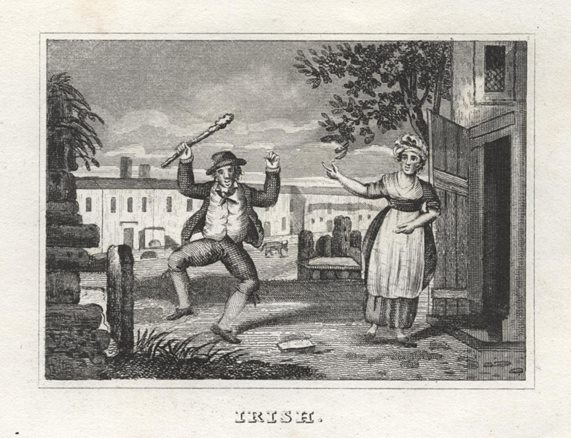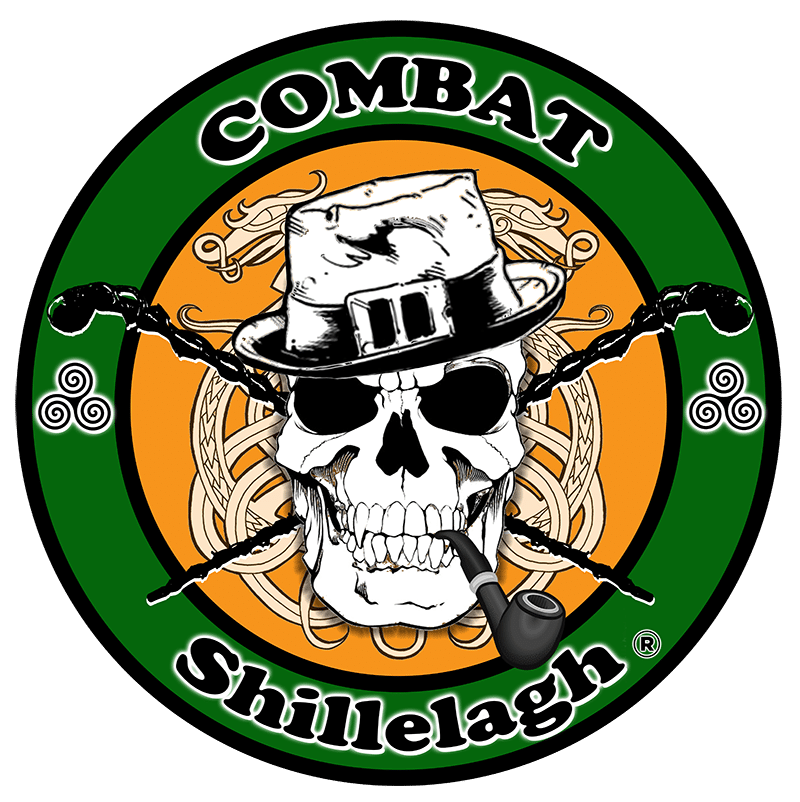The word Shillelagh comes from the Irish phrase sail éille which translates into English as “thonged willow-stick.”
Another origination story states that the name came from a king or clan chieftain, Ealach Mac Faelchon who lived in the 7th century AD. His followers became known as the “Siol Ealaigh” meaning the seed or descendants of Ealach.
The Shillelagh (pronounced “shalaylee” or “sheleighly”) is thought to have originated in the village of Shillelagh, County Wicklow, which was once said to be surrounded by vast oak forests. Shillelaghs are usually made from Blackthorn wood with a leather wrist strap joined to the handle. The Shillelagh was commonly used as a walking cane or walking stick and can sometimes be described as a cudgel. It is typically made from a stout knobby and knotty stick with a knotty head, which can be used for gripping or striking. Blackthorn has unique properties, and it delivers the correct blend of lightness and hardness which follows a process of cutting, seasoning, oiling, fashioning and sealing. This process can take up to three years. Shillelaghs can be everything from ornamental keepsakes to walking sticks to lethal fighting sticks, especially when fashioned with lead “loaded” heads. There are some historical records and references that say the practice of stick-fighting in ancient Ireland was an analog to help train Irish warriors in broadsword and saber fencing. It seems that from the original Irish staff, spear, axe, stick and sword fighting methods originated the later form of Irish stick fighting which came to be associated with the Shillelagh.
Bataireacht and “Shillelagh Law” – The Shillelagh was the primary weapon used in Bataireacht – a form of traditional Irish stick fighting popular in the 18th and 19th centuries. During the 18th century bataireacht was practiced primarily with Irish gangs called “factions” who often fought each other at gatherings and events. While most of these fights were purely for sport, they eventually took on a political and violent edge as the years went on. Faction fights remained a common occurrence up until the 1840s and the last recorded brawl took place in 1887 at a fair in Co. Tipperary. By the 19th Century Shillelagh Irish Stick Fighting had evolved into a martial art. Fathers taught their sons how to fight and many young boys received shillelaghs as a significant rite of manhood. Some boys were educated in the ways of the Shillelagh by the local Maighistir Prionnsa or “fencing master”.
Guide to Irish Stick Fighting
You can get a deeper look at the history and applications of Shillelagh in Irish Stick Fighting here: https://www.combatshillelagh.com/guide-to-irish-stick-fighting/
Combat Shillelagh Distance Learning Courses
We invite you to check out Blended Learning Program and start on your path to studying Shillelagh Irish Stick Fighting today!
Combat Shillelagh – Black Belt Distance Learning Program Bundle!
In the meantime, feel free to enter our Authentic Shillelagh Giveaway Contest here: www.irishstickwarrior.com/giveaway/

